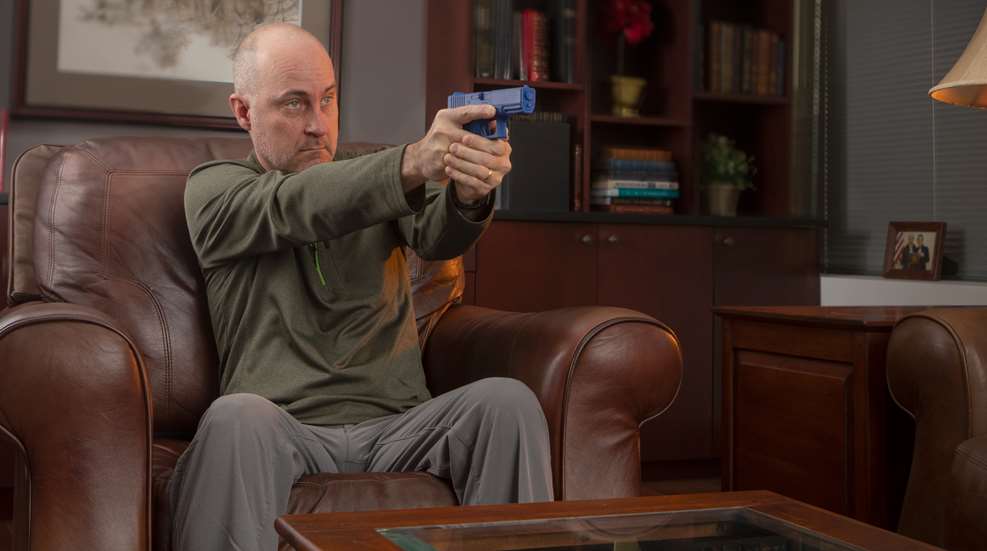
I really enjoy seeing some of the debates and arguments over whether the Isosceles stance or the Weaver stance is the best, so let’s look at reality. I can’t tell you exactly what a criminal will be doing when an attack begins, but one thing is almost certain—they won’t be standing there all squared away like your silhouette target, waiting for you to get into the fighting stance you think is coolest.
Instead, the really dangerous criminals will use every advantage they can find. They will try to catch you when you are least able to defend yourself, which might be when you are walking to your car with an armload of groceries, kneeling to pick up the keys you dropped or when you are sitting or even lying down. In short, the really dangerous ones will take every advantage that they can.
I recently read a study that shocked me because it said that the average person spends almost 10 hours per day sitting down. However, when you think about the time spent sitting in your car, at your desk at work or in an easy chair at home, it makes a lot of sense. In spite of that, when was the last time that you worked on a pistol presentation while seated in one of your training classes? My guess would be never, simply because it is difficult to do with a class of any size on a square range. And, most public ranges aren’t going to allow it.
This and other oddball positions might best be practiced at home during a dry-practice session. I would even suggest that you set your real gun aside and do some drills using the inert plastic guns that we generally refer to as “blue guns” to be as safe as possible.
Considering the situation while seated, one might argue that the best thing to do is to stand quickly and draw the gun. But, that requires extra movement—and time wasted when time is mighty valuable. Also, when a person is in a vehicle, standing is out of the question. The quickest move is to access their gun while seated and address the threat.
Other practice drills might involve getting the handgun into play while kneeling or lying down. Don’t forget to work on defending yourself while on your back; you might be knocked flat at the beginning.
The key is to determine ways to get the defensive handgun into play without covering yourself with the muzzle. In these stressful situations, a self-inflicted wound is a distinct possibility, and one you obviously must avoid.
Another benefit of working out these oddball situations is you may find out that your choice of handgun is not the best decision. Safeties and sights may cause problems you didn’t anticipate. The same is true of holsters and the position in which you choose to carry them.
I have found that I have quicker access to my handgun when it is somewhere on the front side of my body, either appendix carry or crossdraw. After all, we spend most of our time with our hands on the front side of our body. In truth, it may only reduce a fraction of a second from our draw time but, when your life is on the line, fractions of a second can become very important. Another consideration favoring this type of carry is that I can draw the gun with either hand.
When driving on long trips, carrying my regular defense gun in a shoulder holster provides quick access to the gun. This is mainly because I have found that I can get in under the shoulder strap of the seat belt faster than if the gun is located at my waist.
It would be a mistake to change what you carry and the way you carry it simply because that guy from Shooting Illustrated does it that way. The smart move is to take the time to practice presentations from less-than-optimal positions and figure out what works best for you. Be concerned with safety and keeping control of the gun. Be concerned with getting a shooting grip on the gun and getting it on target as quickly and safely as possible.
I recently read a shooting report where the victim was wheelchair bound. He answered a knock at his door, only to have the door kicked open and his wheelchair knocked over. In spite of all of this, the victim got a hand on his gun and fired a shot as he was knocked over, stopping his attacker.
Just like that armed citizen, we need to plan for the unexpected and determine the most practical and quickest ways to deal with potential threats.





































